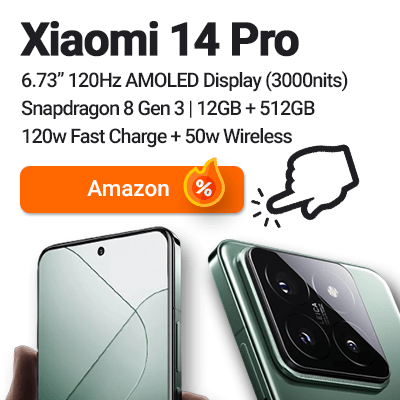
Have you ever tried listening to your music on a plane but the engine hum drowns out your favourite playlist? Or maybe you’ve hopped on a bus and have had to jack the volume all the way up despite your phone’s warnings.
We’ve all been there and have felt somewhat helpless, but there is one piece of technology that can help us out – Active Noise Cancelling (ANC). Mobile phones use ANC to remove background noise when you’re on a call; headphones use it to make your music clearer and even cars use it to reduce engine and road noise.
(This article was contributed to Review Hub from TopCut.in – Tech Reviews.)
How it all started
It all started with a guy named Amar. Way back in 1978, Amar was on a flight from the United States to Switzerland. Amar, like most of us, loved his music. He plugged in his headphones and found that the constant drone of the engine drowned out the sounds.
In fact, it’s said that he couldn’t hear at all. The thing about Amar is, he wasn’t one to sit back and accept this. Instead, he took a paper napkin and started working out a plan to reduce outside noise interference while using headphones.
Although talks and work on noise cancelling had begun in the early 1930’s, upon his return, Amar brought together a group of brilliant minds and created the Noise Reduction Technology Group.
Eleven years later in 1989, they gave the world its first commercially available noise cancelling headphones.
This particular incident was the reason why we have noise cancelling headphones today. Oh, and one other thing… Amar’s last name is Bose.
Yup, he is the founder of famous Bose Corporation. Bose pioneered noise cancelling headphones and is known today for their class-leading audio products. Sennheiser too worked on the technology at the same time as Bose but was pipped at the post.
The Best Noise Cancellation Headphones 2018
- Bose Quiet Comfort 35 Series II
- B&O PLAY Beoplay H9
- Sennheiser PXC 550
- Sony WH-1000XM2 Wireless
So, how does noise cancellation work?
What sort of magic goes on inside the headphones that drown out the outside sound interference. Well, the noise cancellation process happens because of two main components – microphones and a noise-cancelling circuit.
The microphone’s task is to continually pick up sounds and pass it onto the noise-cancelling circuit. The noise-cancelling circuit’s look at the sounds sent by the mic and decide if they are continuous or not.
Continuous sounds are waves that have similar frequency and amplitude. For example, the drone of a plane’s engine, noise from an air conditioner, noise from your annoying old fridge-freezer.
If it is continuous, the noise-cancelling circuit creates an inverse wave of the noise and plays it back to the listener through the headphones.
Doing so cancels out the droning noise… magic!
A simplified equation to show you how noise cancelling works:
- Aeroplane noise = +1
- Noise Cancelling Inverse Wave = -1
- Thus, (+1) + (-1) = 0, Noise cancelled.
Even though the noise cancelling procedure is not instant, this technique works perfectly for continuous and similar sounds.
But when you introduce a sound that’s not continuous – changing in amplitude or frequency – the circuit is slow to pick it up and hence you can still hear irregular sounds, screams, human voices etc.
Furthermore, the noise cancelling works only with sounds of low frequencies, while high-frequency sounds and most mid-frequency sounds are unaffected. This is why a little noise leaks in through some noise cancelling headphones.
Why noise cancellation is necessary
When you plug in you’re a pair of non-ANC earphones or headphones; it’ll block some of the background noise. But this effect reduces when you move too much noisier environments like inside a bus or a train or a plane.
These are areas where a regular headphone cannot do much to drown out the noise except try to pad your ears. This is precisely the environment where a noise cancelling headphone shines thanks to the constant low background noises.
One of the main benefits of using noise cancelling headphone is that your hearing will be protected. With a regular headphone, you often turn your music up to max volume to drown out a noisy surrounding which can cause damage over prolonged periods of times.
Active noise cancelling headphones help you reduce the background noise as well as enjoy your music at a volume that is comfortable for the ear.
Even in busy office environments, having a pair of ANC headphones will help dull the background noises making it easier to concentrate.
Noise Cancellation Vs. Noise Isolation: What’s the difference?
Noise isolation and noise cancellation are two words that are commonly interchanged especially with a few affordable headphones and earphones. But both terms are different.
Noise isolation is a type of natural noise blocking with the help of earbuds (earphones) or ear cups (headphones). The material of the earcups or earbuds and the design will help you block out some sounds and partially isolate your music and hence the name.
There are many different designs of headphones and earphones; some will offer better noise isolation than others. But in general, earphones provide better noise isolation than headphones as they form a tighter seal around your ear canal.
Over-ear headphones will provide more noise isolation than on-ear and closed back generally offer more than open back headphones. It’s all about the air seal and the build materials.
Noise Cancellation as we’ve explained above, actively cancel noise and are much more effective. Most noise-cancelling over-ear headphones also come with noise isolating ear cups which further help to eliminate background noise.
Are Noise Cancelling Headphones Right For You?
Here are the pros and cons to help you decide.
Pros
- Reduces background noise.
- Enables you to listen to your music at a much lower, safer volume.
- Improves listening experience and feels more comfortable
- Great for travelling
- Improves concentration by blocking out distracting noises
Not everything is perfect and noise cancelling devices have their fair share of downfalls too.
Cons
- More expensive than regular headphones
- Lower sound quality than similarly specced regular headphones, due to the high-frequency hiss sound
- Requires regular charging or batteries
- Bulkier than regular headphones and earphones
- Blocks only lower bassier sounds, cannot block out human voices, irregular sounds etc.
- Not all people may like the soft hum/hiss sound of the inverse wave or the pressure on the eardrum
What’s your preference? Are you all about the ANC or does the quality of sound matter a lot more to you? Let us know in the comments!







What do you think of ANC Noise Cancellation?